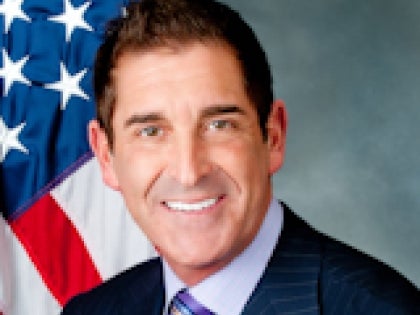
In The New York Post Senator Klein Speaks On The Foreclosure Next Door
Jeffrey D. Klein
June 26, 2008
NEIGHBORS ARE MAD AS HELL ABOUT ABANDONED HOMES
by CAROLYN SALAZAR and BILL SANDERSON
of The NEW YORK POST
Even a couple of foreclosed homes can drag down a neighborhood. That's the lesson Throgs Neck residents learned the hard way by watching two houses in their Bronx neighborhood decay after lenders forced their owners out.
The two foreclosed homes, on Revere and Calhoun avenues, brought their neighbors to despair over mouse infestation, giant stinking piles of trash, graffiti and vandalism.
"Here I am fixing my house, trying to make it better, and the house next door is just gross," says Norma Ramirez, a 63-year-old retiree who owns a home on Revere Avenue.
According to New York University's Furman Center for Real Estate and Urban Policy, just one or two foreclosed homes can lop 1.8 percent off the sale price of homes within 500 feet. More foreclosures drive neighborhood values even lower. Sales prices of homes within 500 feet of three to five foreclosed properties are 2.8 percent less than comparable houses elsewhere, the NYU researchers say. Homes near 20 or more foreclosed homes see sales prices that are 3.7 percent lower.
Sen. Jeffrey Klein (D-Bronx) cites other nationwide studies indicating that homeowners living near foreclosed houses see their property values decrease by an average of $5,000.
"Your property values are going down, as well as the quality of life," says Klein, who wants a law requiring banks that take over homes to maintain them "in a safe and habitable condition."
Nothing seems habitable about the house on Revere Avenue, now in the hands of a lender. Its dingy gray vinyl siding is falling off, its painted surfaces are peeling, its iron fence has rusted. Around the back, the screen door has collapsed.
It was even worse before neighbors got together and, with Klein's help, got the bank to clean things up.
"The garbage started piling up, and the back yard became infested with mice," says Ramirez, who has lived next door for eight years. "No one was doing anything."
When a lender took over the house around the corner on Calhoun Avenue, it "just became a dump," says Desiree Casablanca, who lives next door to that house.
"There were squatters living there, runaway teenagers. People were constantly going in and out. There were two dogs there - nobody cleaned up after the dogs. There was graffiti on the door and on the walkway."
Klein's office helped persuade the lender to remove the squatters in February. The property now has a new owner, and neighbors say conditions seem to be improving.
"We take pride in our community, and people who didn't care were in there," says Elena Vera, 62, who lives across the street. "This is our investment; this is our neighborhood. What happens to those properties affects everyone's quality of life."
Share this Article or Press Release
Newsroom
Go to Newsroom